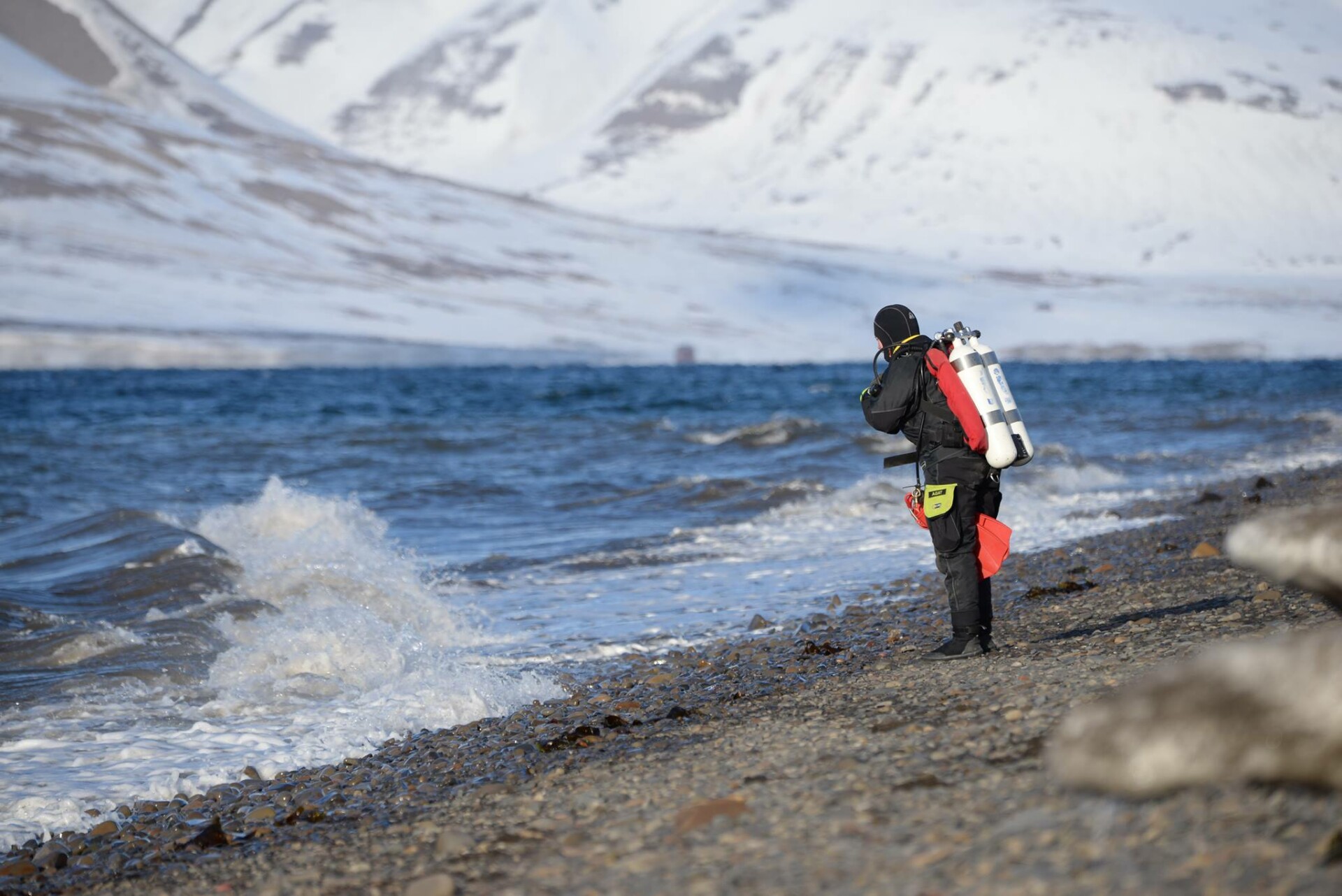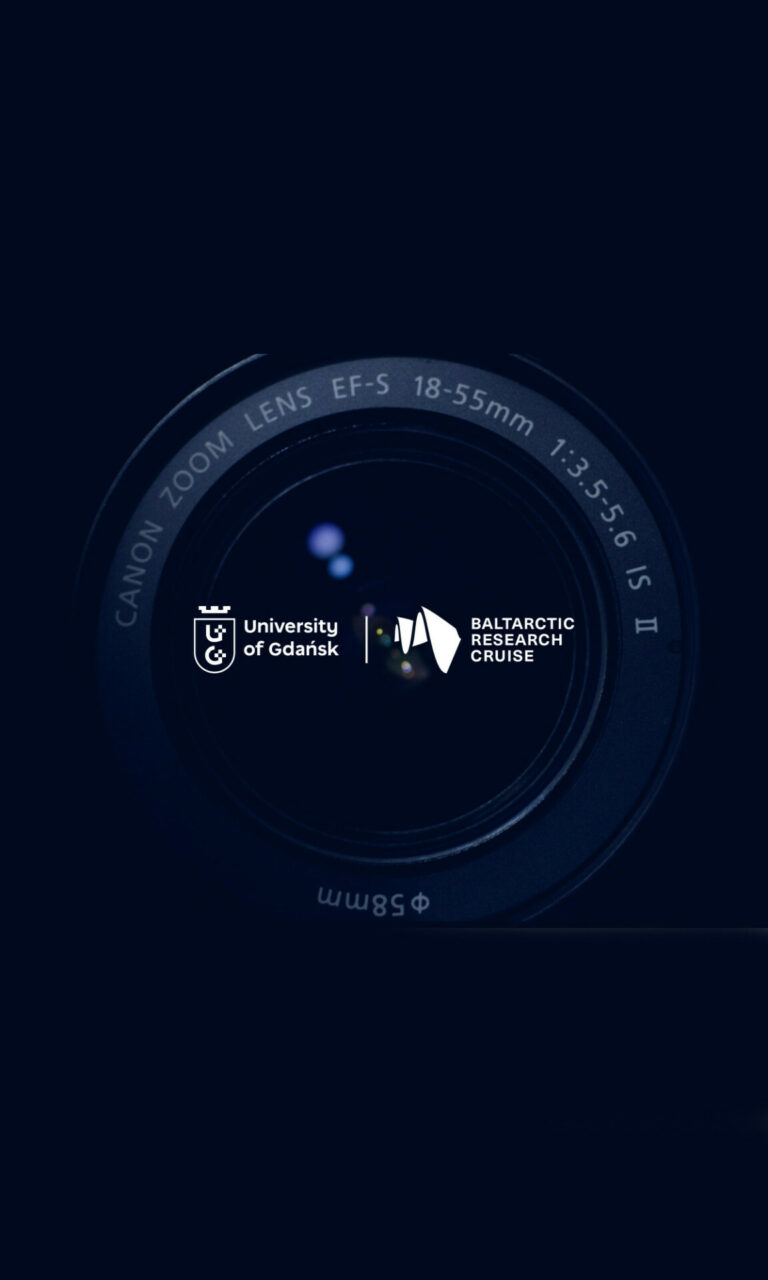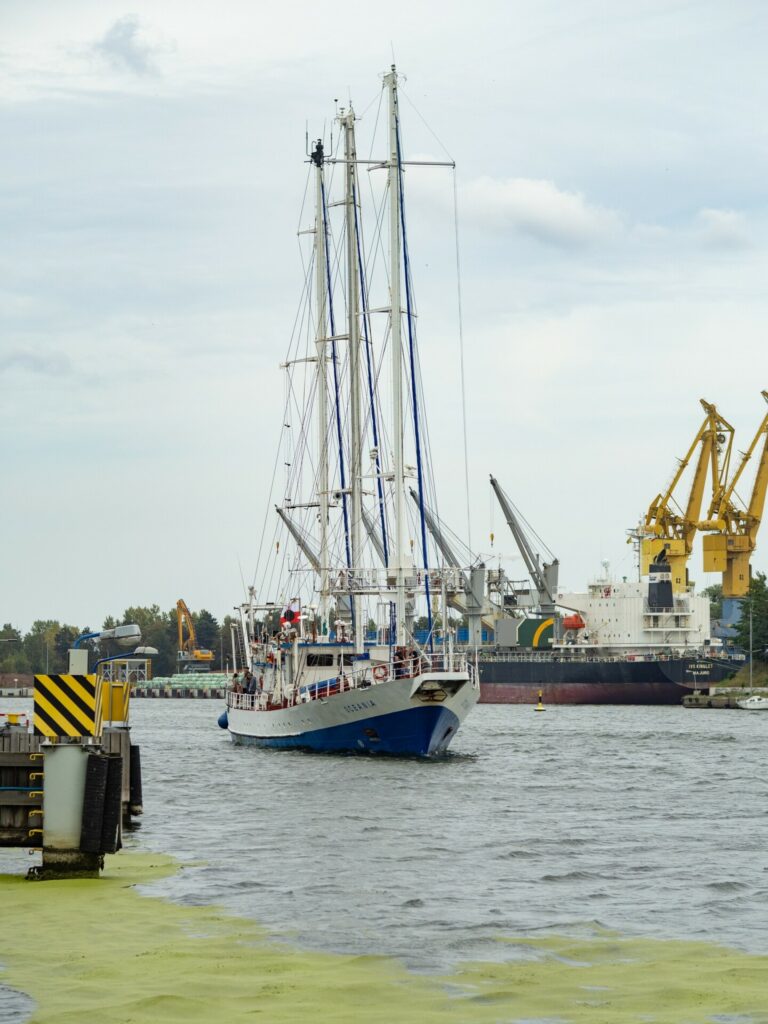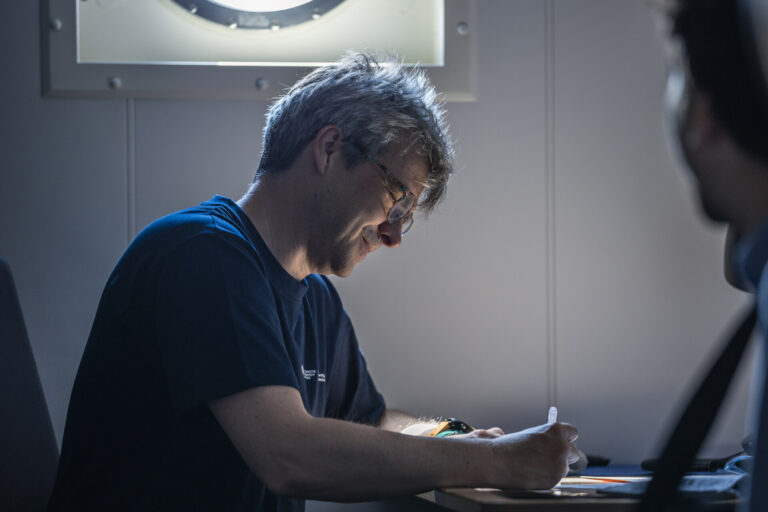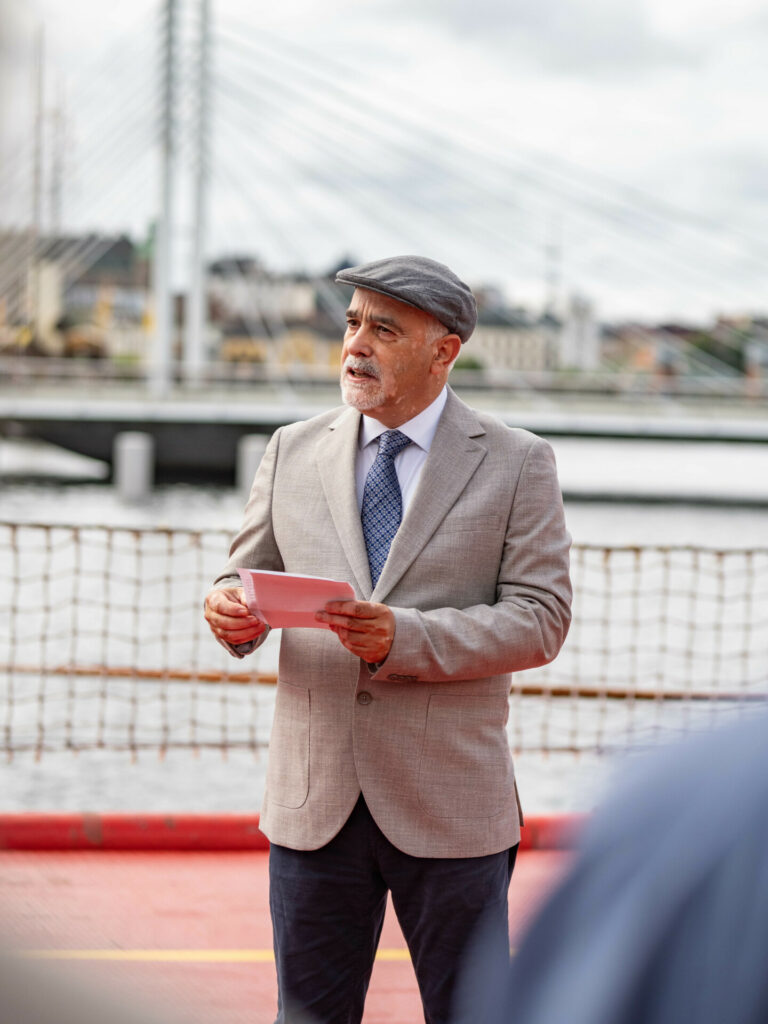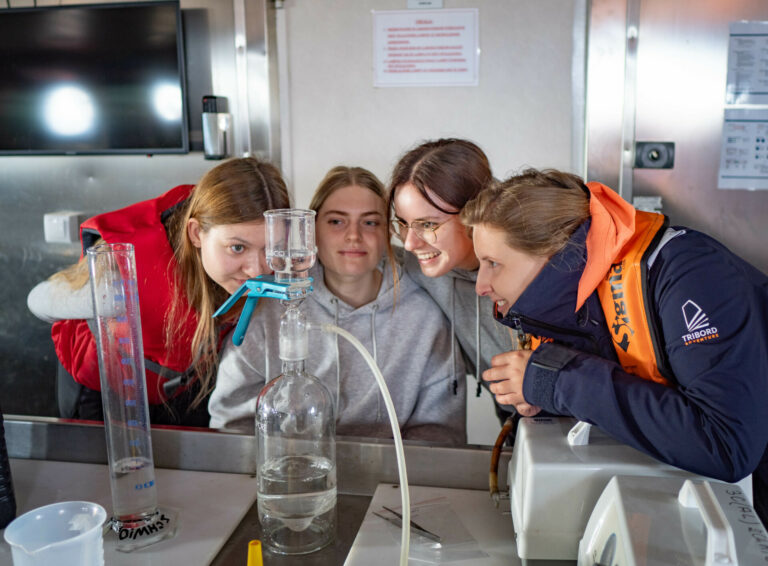‘Nowadays, large-scale research is no longer possible within a single institution or discipline. We have more and more research tools that require interdisciplinary knowledge, and it is only through cooperation that we can conduct modern research and push the boundaries of the known,’ says the research team leader of the BaltArctic Research Cruise, Professor Agata Weydmann-Zwolicka. We talk to the marine scientist about the cruise’s three major research tasks, coordinating international scientific cooperation, and her love of the Arctic.
– What are the main objectives of your research during the cruise?
Prof. Agata Weydmann-Zwolicka: – Our aim is to trace the path of the water flowing out of the Baltic Sea to the north. We want to see how far we can follow it along the coasts of Sweden and Norway.
– How do your activities relate to studying the impact of climate change on Arctic ecosystems?
– During the cruise, we will study the human impact on the seas, but not in the context of global warming. It is very important to us to find out what is in the Baltic waters that we are going to trace. The Baltic Sea is quite specific because of, among other things, it is much fresher than other seas due to a minor inflow of Atlantic waters and a major river run-off. There is a very dense human population around it, which means that rivers pour in all kinds of pollutants, artificial fertilisers and other substances that affect the sea’s ecosystem. Throughout the BaltArctic Research Cruise, we want to see how far north of the Baltic Sea traces of human activity within this sea are still detectable.
– What substances do you want to track during this research?
– Scientists from the UG Faculty of Oceanography and Geography and the University of Cádiz will primarily be studying chemical properties of Baltic waters and also tracking contaminants, while a researcher from the University of Algarve will be investigating microplastics. These substances are to be expected, but we will also try to trace the pathways of the substances that make the Baltic Sea a highly eutrophic, nutrient-rich waterbody. High nutrient concentration influences phytoplankton, which are small, single-celled algae, but it is also the reason we have cyanobacterial blooms almost every year. Human activity is largely at fault here, because plants and other autotrophic organisms in the sea are affected by the same substances that we use on land. This means that if a fertiliser from a field ends up in a river and then consecutively in a sea, it supports the growth of marine plants, and other autotrophic organisms, as well.
– What specific methods and tools are you going to you use to collect data and samples during the cruise?
– Our project consists of three research tasks. The first concerns the study of oceanographic conditions directly related to sea currents, as water flows out of the Baltic area in the form of a current. Within this task, we will measure the salinity, temperature and other physical properties of the water. Besides various types of probes, we will use drifters, which are buoys floating in the seawater and transmitting their position via satellite. With these, we will be able to investigate the track and speed of the current flowing out of the Baltic Sea towards the North. The second research task concerns marine chemistry in the broadest sense, i.e. the basic parameters of Baltic water and other waters we encounter along the way, as well as marine aerosols. During the cruise, we will collect water samples using bathometers – devices that collect a specific volume of water at a specific depth. The third research task concerns organisms that may be carried or present in the Baltic water masses. Here we are mainly talking about plankton, i.e. small plants and animals that are transported by sea currents, but also about the fish that feed on these organisms.
– Other scientific teams from different research institutions are also involved in this cruise. How do you plan to coordinate this cooperation?
– The whole BaltArctic Research Cruise is based on cooperation with the Institute of Oceanology of the Polish Academy of Sciences in Sopot. This means that two vessels will be involved in this project – r/v Oceanograf and r/v Oceania. Both vessels will carry out surveys in parallel on the same route, i.e. making the same measurements and using the same methods, etc. R/v Oceanograf will sail closer to the shore, and r/v Oceania on the open sea. This approach will allow us to trace the path of the Baltic water more holistically.
– And in terms of cooperation within the SEA-EU alliance?
– A marine chemist from the University of Algarve will be working on microplastics. Most of the researchers from the University of Cádiz will also be looking at pollution and other chemical properties of seawater, while . another Spanish scientist, together with a researcher from the University of Parthenope in Naples, will look into marine currents. A representative from the University of Kiel will deal with optical studies of seawater, mainly photosynthetic pigments, and a PhD student from NORD University in Norway will study zooplankton, or more precisely, meroplankton – the larvae of organisms living on the seabed. This is what the cooperation will look like on the way to Norway, while during the return, the ship will be used for projects run by students from the University of Gdańsk, but also by PhD students from partner universities and SEA-EU affiliates.
– From a scientist’s perspective, how does this expedition differ from a typical research cruise on a UG ship?
– The main differences are the length of the cruise, and the distance we will travel. On top of that, r/v Oceanograf usually operates in the Baltic Sea, which is quite a specific and small waterbody. The Norwegian Sea and the North Sea are completely different and fully saline seas. The Baltic is a brackish-water sea, so you will find a mix of marine, brackish and freshwater organisms, whereas the seas in the north contain only marine organisms.
– Will the presence of freshwater organisms be a sign to you that these waters are still influenced by the Baltic?
– Yes, I think that these planktonic organisms will accompany us for some time on our journey to the North until there are gradually fewer and fewer of them, and eventually none at all. This will be one of the signals to us that we have reached the last place where the Baltic Sea water reaches.
– You’ve been working on the Arctic and the Arctic Circle for quite a while now. Why did you decide to take up exploring this region of the world?
– The Arctic interests me for two reasons. Firstly, the Arctic is currently the fastest-warming region on Earth, where changes due to climate warming can be observed with the naked eye. My second reason is more personal – the Arctic is just beautiful, still wild, still covered in ice. It’s a completely different landscape from the one we know from our everyday life, and that fascinates me.
– What is the most important thing for you during this cruise?
– The collaboration. On the one hand, between scientists from both Polish units, namely IO PAN and UG, but also within the SEA-EU alliance. Nowadays, large-scale research is no longer possible within a single institution or discipline. We have more and more research tools that require interdisciplinary knowledge, and it is only through cooperation that we can conduct modern research and push the boundaries of what is known.
Title photo ©dr Piotr Bałazy
